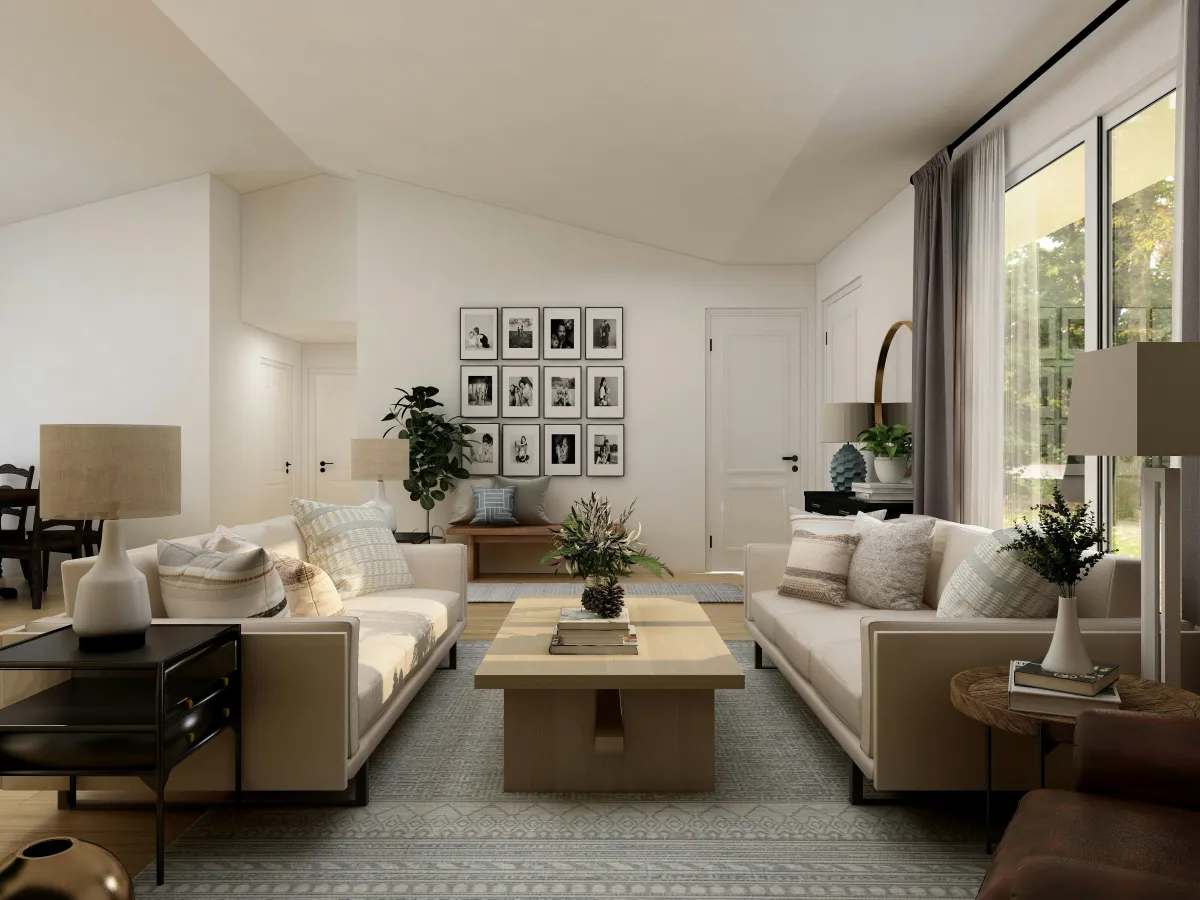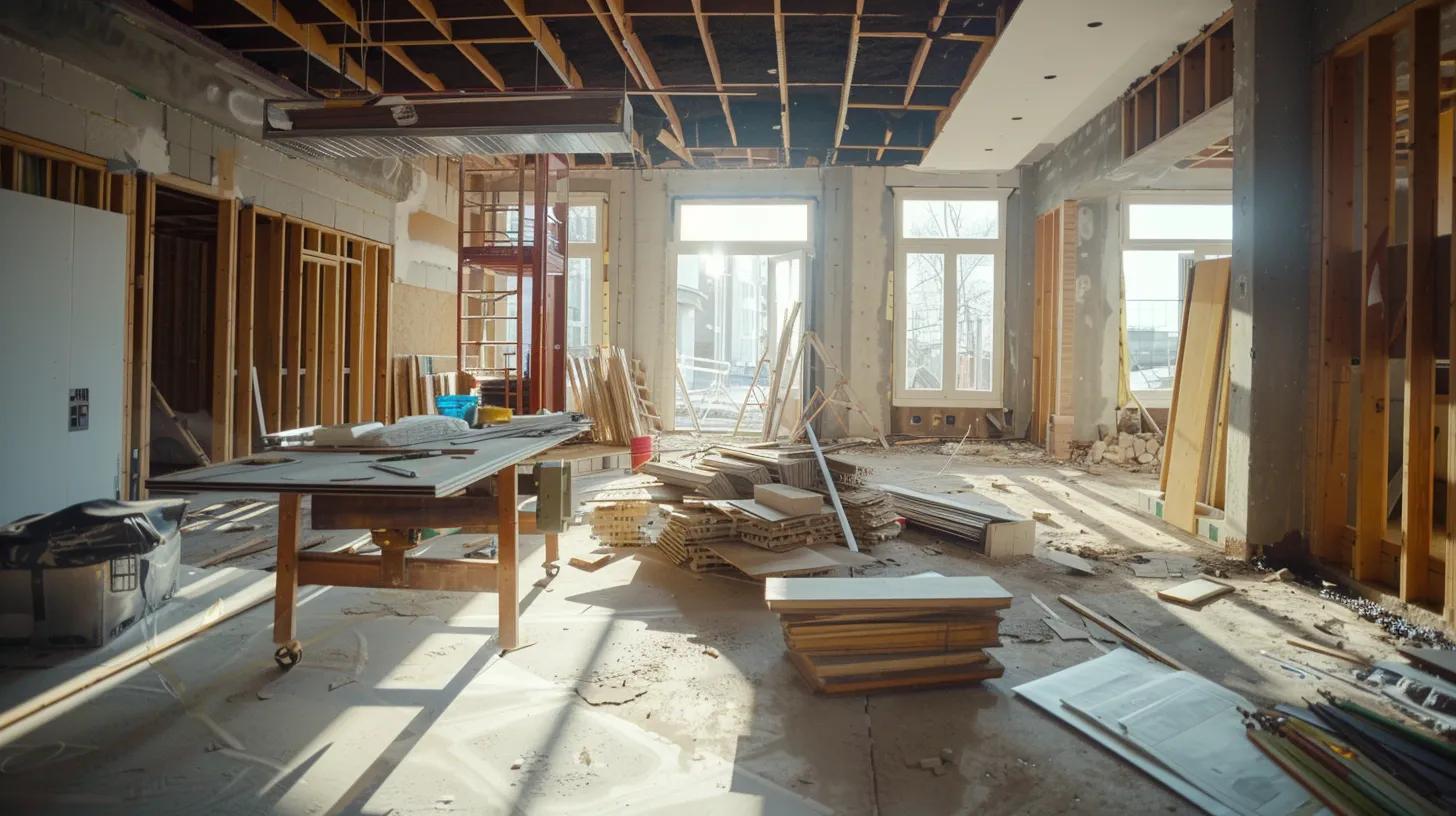
Mastering the Home Renovation: A Complete Planning Guide
Planning a custom home renovation is both exciting and complex. From the initial consultation to selecting materials and managing contractors, each decision shapes the final result. A well-organized renovation not only enhances comfort and aesthetics but also improves energy efficiency, indoor air quality, and long-term savings. Whether you're remodeling an outdated layout or upgrading to smart systems, early planning is essential. Custom Builder Connection makes this process smoother by connecting you with trusted architects, designers, and builders who understand your vision. With the right team and strategy, your renovation project can elevate both style and function.
Key Takeaways
Start your renovation with a structured consultation and needs assessment to define goals and expectations clearly.
A solid renovation budget includes labor, materials, permits, smart upgrades, and a contingency fund.
Energy-efficient systems like smart thermostats, HVAC, and LED lighting improve comfort and reduce long-term costs.
Choosing licensed, reliable contractors is essential for smooth execution, safety, and staying on schedule.
Sustainable materials like reclaimed wood and low-VOC paint enhance both the environment and your home’s value.
What Are the First Steps in Renovation Project Planning for Custom Homes?

Begin with an initial consultation and needs assessment by discussing ideas, budget limits, and functional requirements with experts. This process clarifies the project scope while balancing design vision with practical constraints.
How to Conduct an Initial Consultation and Needs Assessment
Begin by meeting with design and construction professionals to discuss your renovation goals. Assess outdated layouts, poor lighting, and structural inefficiencies that limit comfort or performance. The consultation is used to define space usage, natural lighting needs, and sustainability goals. Professionals can help address airflow, ceiling height concerns, or room connectivity. Conversations may also highlight accessibility needs and climate considerations. Photos or sketches help communicate your ideas clearly. Identify existing challenges like basement dampness or attic heat buildup. This step helps shape the renovation plan in a structured, informed way.
What Should Be Included in a Custom Home Renovation Budget?
A complete renovation budget includes demolition, materials, permits, and contractor labor. Factor in updates to key systems like HVAC, electrical, and plumbing infrastructure. Energy-efficient upgrades such as insulation or smart thermostats should be included. Allocate for interior elements like ceiling finishes, eco-friendly paint, and fixture replacements. Always build in a contingency for unexpected structural or design changes. Don’t overlook costs related to accessibility improvements or safety enhancements. List line items to track spending across each phase of the project. An organized budget supports confident decision-making throughout.
How to Develop a Detailed Design Plan With Floor Plans and 3D Renderings
Start with updated floor plans to visualize the flow and function of each room. Use 3D renderings to evaluate lighting, material choices, and space transitions. These models allow for better placement of windows for daylight and adjustments to ceiling heights. Identify where new wall placements can improve insulation or reduce thermal bridging. Highlight energy flows, smart home integration, and attic or basement conversions. Clarify where sustainable materials like tile or reclaimed wood will be used. These visuals support better communication between your design and build teams. Clear plans reduce errors and improve execution during construction.
How to Choose the Right Architect or Designer for Your Renovation
Review portfolios to evaluate design style, functional layouts, and project scope. Look for professionals with experience in custom renovations and updated code compliance. They should be familiar with energy conservation techniques like passive design and thermal mass planning. Comfort with home automation and environmentally friendly solutions is a plus. Ask how they approach challenges like basement layouts or open plan conversions. Clear communication and responsiveness are critical throughout the project. Strong planning collaboration reduces delays and keeps your vision on track. Select a team that aligns with your goals for both form and function.
How Do You Select and Manage Contractors for Custom Home Renovations?

Selecting the right contractors is essential to a successful home renovation project. Begin by evaluating licenses, insurance, and experience with similar home improvement projects. Contractors should understand the scope of your custom home remodel and provide detailed bids with timelines. Contracts must outline pricing, responsibilities, and cleanup procedures for debris removal. Effective project management involves scheduling, coordination, and consistent updates. Ensure your contractor is responsive and familiar with the entire home renovation process. Strong communication reduces missteps during your house renovation. A clear agreement helps keep your home remodel organized and on budget.
What Are the Best Practices for Choosing a Reliable Renovation Contractor?
Start by checking references and past home remodeling projects for quality and reliability. Review portfolios that showcase custom home work with functional layouts and modern upgrades. Ensure the contractor’s pricing structure is clear and aligned with your renovation goals. Ask about their process for handling construction debris and cleanup responsibilities. Confirm their understanding of mechanical systems like duct installations and lighting upgrades. Licensed professionals should offer comprehensive project management and scheduling. Strong communication and responsiveness are key traits of dependable contractors. A detailed agreement lays the foundation for a successful home improvement project.
How to Establish Clear Communication and Expectations With Contractors
Draft a written agreement that outlines responsibilities, deliverables, and deadlines. Use project management tools to monitor progress and adjust for schedule shifts during the home renovation process. Schedule regular meetings to review timelines, material deliveries, and punch list items. Keep communication open to resolve layout changes or fixture substitutions quickly. Contractors should update you on progress, unexpected issues, or delays. Clear protocols for handling debris, duct work, or last-minute changes reduce confusion. Tracking milestones ensures smooth progression through your home renovation project. Structured communication supports a stress-free remodeling experience.
How to Handle Unexpected Issues During Renovation Projects
Set aside time and budget buffers for changes during the home improvement project. Delays can arise from structural discoveries, material shortages, or code updates. A flexible project management plan helps you stay on track when setbacks occur. Schedule periodic inspections to catch problems early, like water damage, faulty ducts, or outdated wiring. Document all changes to ensure the punch list remains accurate. Keep contractors accountable for debris management and safety throughout the site. A responsive team helps minimize disruption and maintain momentum. Preparedness allows your home renovation process to move forward confidently.
What Is the Typical Timeline and Construction Process for Custom Home Renovations?

Renovations move through stages including demolition, structural updates, and interior finishing. Your home remodel begins with debris removal and rough repairs, followed by electrical, HVAC, and framing. Mid-stage tasks involve selecting fixtures like light fixtures and choosing flooring or paint. Final stages include interior design, punch list completion, and smart system installation. Timelines vary depending on the project scope and complexity. Clear scheduling ensures all phases of the house renovation stay organized. Progress reviews help resolve issues before they affect the finish. Proper planning leads to a smooth and timely home renovation project.
What Are the Key Construction Phases: Demolition to Finishing?
The home renovation process typically begins with demolition and debris removal. Structural repairs and framing come next, along with electrical and duct system installations. Midway through, contractors handle wall prep, fixture placement, and insulation upgrades. Home remodeling steps also include painting, flooring, and installing modern light fixtures. Smart systems and interior design finishes follow in the final phase. Each stage should be clearly defined to manage timing and budget. Staying on schedule requires organized project management and regular site checks. Completing each step thoroughly ensures quality and efficiency across your custom home remodel.
How to Create and Manage a Realistic Renovation Project Schedule
Build a schedule that accounts for each renovation phase, including approvals and finishing work. Use project management tools like Gantt charts to track tasks and timelines. Identify milestones for demolition, structural upgrades, and fixture installation. Include time for potential delays, such as ductwork changes or fixture backorders. Make space in the timeline for inspections and the punch list review. Organize schedules to minimize overlapping trades and reduce cleanup challenges. Staying realistic ensures a steady pace in your home improvement project. Frequent reviews help catch and correct schedule drift early.
How to Source and Select Quality Materials for Your Renovation
Choosing materials that align with your home remodeling goals ensures durability and performance. Research suppliers and compare options for eco-friendly finishes and energy-efficient upgrades. Items like LED light fixtures, recycled surfaces, and low-VOC paints improve indoor comfort. High-quality windows, flooring, and cabinetry increase your custom home’s value. Include cost, aesthetics, and sustainability in your decision-making. Prioritize products that reduce maintenance and perform well in your climate. Durable materials help your house renovation last longer and operate more efficiently. Smart sourcing also keeps your home improvement project on budget.
How Can You Incorporate Sustainable and Energy-Efficient Practices in Renovation Planning?

Incorporating energy efficiency and sustainability improves comfort, lowers utility bills, and increases long-term value. Start by reviewing your home's energy usage, insulation, and lighting systems. Upgrade to energy-efficient appliances and HVAC systems to reduce power consumption. Use durable, low-emission materials that improve air quality and minimize environmental impact. Consider layout adjustments that support daylight, passive heating, and airflow. Smart upgrades like programmable thermostats improve system control. Sustainable renovations also support home value in changing markets. Thoughtful planning creates a high-performing and healthier home remodel.
What Eco-Friendly Materials Are Best for Custom Home Renovations?
Eco-friendly materials support indoor air quality and lower environmental impact. Consider reclaimed wood, low-VOC finishes, and recycled tile for your home remodel. These choices reduce emissions and support sustainability in your home renovation project. Bamboo flooring and natural stone offer both beauty and durability. Products made from recycled content also help reduce construction waste. Prioritize materials that align with your aesthetic and functional goals. Selecting sustainable items reinforces energy efficiency across the home. Thoughtful sourcing benefits both your lifestyle and the planet.
How to Integrate Energy-Efficient Appliances and Systems
Choose ENERGY STAR-rated appliances and smart systems that improve performance and reduce energy use. Efficient HVAC units, duct systems, and heat pumps enhance climate control while cutting costs. Add smart thermostats and sensors to adjust usage based on real-time needs. Insulation improvements and airtight sealing reduce heat loss and moisture buildup. Use zoned lighting with LED light fixtures to save power while improving visibility. Energy-efficient upgrades should align with your custom home’s layout and usage patterns. These systems improve comfort while reducing your carbon footprint. Integration ensures consistency across the entire home renovation project.
What Are the Benefits of Sustainable Design Principles in Renovations?
Sustainable design helps reduce waste, energy consumption, and maintenance in any home improvement project. Smart layouts optimize airflow, daylight, and usable space, which improves efficiency. Natural materials and minimalism contribute to lower environmental impact and simpler upkeep. Strategic ceiling and wall upgrades also support insulation and humidity control. Energy-efficient appliances and climate-responsive features lower monthly bills. These elements improve air quality, safety, and long-term performance. Adopting sustainable design increases home value and buyer interest. It makes your home remodel future-ready and environmentally friendly.
How Do You Plan the Finishing Touches: Interior Design and Smart Home Integration?

The final design details are what bring the entire renovation together, enhancing both the look and functionality of the space. Thoughtfully selected finishes, color palettes, and materials help define the home’s personality and atmosphere. When paired with integrated smart technologies—like automated lighting, climate control, and security features—they create a seamless blend of style and convenience. This final stage transforms your custom renovation from simply beautiful to fully livable, offering lasting comfort and ease.
What Are the Latest Interior Design Styles and Trends for Custom Homes?
Modern interior design embraces minimalism, open spaces, and natural textures. Light fixtures, wood elements, and neutral tones create a calm and versatile palette. Layouts now favor seamless flow between indoor and outdoor spaces. Energy-efficient upgrades and smart home systems are often integrated into the aesthetic. Ceiling treatments and built-in storage help maintain function and visual simplicity. Sustainable materials are used for both style and health benefits. Trends also include flexible rooms that adapt to evolving needs. These styles support both modern living and long-term durability in your home remodel.
How to Choose Finishes Like Flooring, Paint, and Fixtures
Focus on finishes that blend durability with style and environmental performance. Choose slip-resistant flooring, especially in kitchens or bathrooms, to improve safety. Low-VOC or eco-friendly paint helps reduce indoor air pollution and odors. Light fixtures should be energy-efficient and suited to each room’s use. Look for materials that match the home’s architecture and personal style. Prioritize quality and resistance to wear to support long-term value. Finishes should be easy to clean and maintain through regular use. These selections enhance both comfort and performance in your house renovation.
How to Incorporate Home Automation and Smart Home Features
Home automation brings convenience and efficiency to any home improvement project. Install smart systems for lighting, climate, and security to optimize control. Smart thermostats regulate temperature and reduce waste throughout the day. Connected appliances, lighting, and blinds can respond to occupancy or weather changes. Use a centralized platform to monitor all devices for better project management. Automated features also improve safety and reduce manual effort. These integrations support energy conservation and modern functionality. Blending automation with interior design elevates your entire home remodel experience.
Frequently Asked Questions
What is the first step in planning a custom home renovation?
The first step is an in-depth consultation and needs assessment. This helps define your goals, evaluate existing layout issues, and outline your budget and timeline. It also clarifies the project scope, including structural updates and design preferences. Custom Builder Connection assists homeowners by connecting them with expert designers and contractors who can translate this vision into a feasible, well-managed renovation plan.
How can energy-efficient systems benefit renovations?
Energy-efficient systems like smart thermostats, LED lighting, and upgraded HVAC reduce long-term utility costs and improve home comfort. These systems support better indoor air quality, moisture control, and climate responsiveness. Integrating efficiency into your renovation can also increase resale value. While CBC doesn’t install systems directly, Custom Builder Connection helps homeowners find professionals who specialize in energy-conscious upgrades that align with your renovation goals.
What financing options are best for home renovations?
Popular options include home equity loans, renovation loans, and lines of credit. The best choice depends on your budget, home value, and renovation scope. It’s important to consider interest rates, loan terms, and eligibility for green building incentives. CBC partners often help homeowners understand which financing paths pair well with their timeline and project needs. Custom Builder Connection ensures you're matched with teams experienced in working within a variety of financing frameworks.
Why is contractor selection crucial in renovations?
A reliable contractor keeps your renovation on schedule, within budget, and aligned with your design goals. The right contractor will handle permits, manage subcontractors, and communicate clearly at every stage. Mistakes in contractor choice can lead to delays, cost overruns, and code violations. Custom Builder Connection helps streamline this process by introducing you to vetted contractors who have proven success in managing custom home renovations effectively.
How do sustainable materials improve a renovation project?
Sustainable materials reduce environmental impact and improve energy performance. Using options like low-VOC paint, reclaimed wood, and energy-efficient windows boosts indoor air quality and lowers energy bills. These materials also align with modern design trends and increase long-term durability. While CBC doesn’t supply materials, Custom Builder Connection matches homeowners with professionals who prioritize eco-friendly practices and understand how to incorporate them into renovation plans.
Conclusion
A successful custom renovation is built on thoughtful planning, clear communication, and the right team. From managing timelines to selecting finishes, each step plays a critical role in the final outcome. Integrating energy efficiency and sustainable choices can lead to lasting savings and a healthier living environment. With Custom Builder Connection, homeowners gain access to a curated network of renovation professionals who simplify the process from start to finish. Whether you're refreshing a single space or reimagining your entire home, smart planning ensures results that reflect your lifestyle and vision. Let your renovation journey start with confidence—and the right support.


